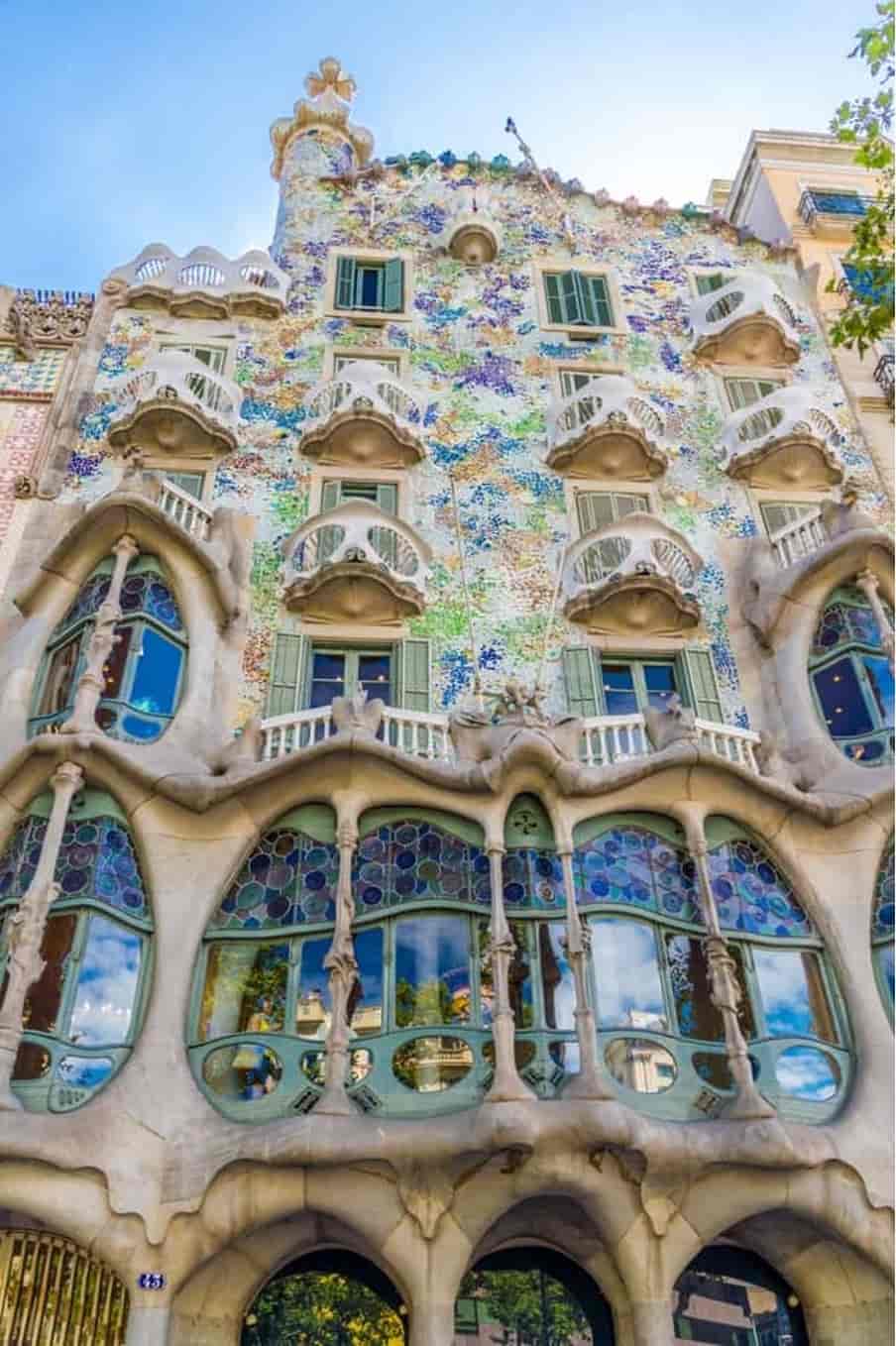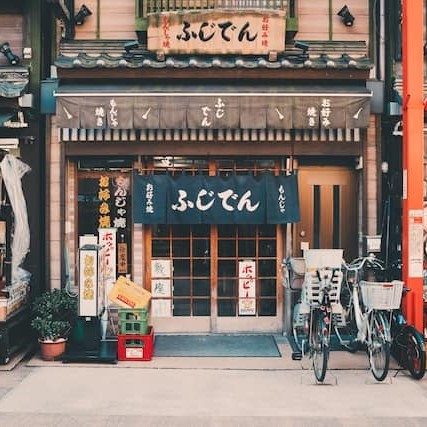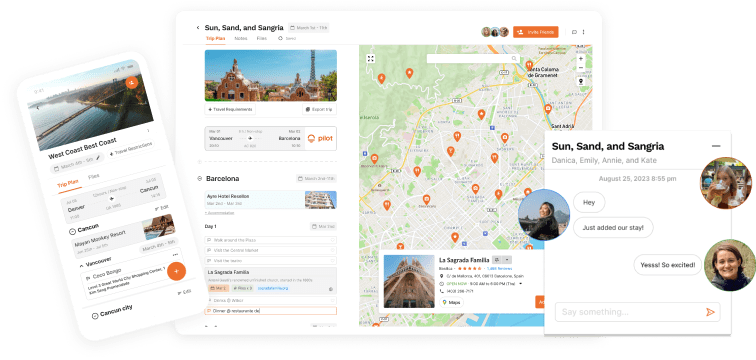Table of Contents
Overlooking the Mediterranean Sea, Barcelona, the capital of Catalonia and the second biggest city in Spain, has become one of the trendiest and most visited cities in Europe.
Here, you will find a wide range of original leisure options that encourage you to visit again and again. Full of endless things to do in Barcelona, you'll definitely have a blast visiting the city.
It's a hub of new trends in the world of culture, fashion, and cuisine. It combines the creativity of contemporary art with local traditions and offers extraordinary experiences. The charm and slower pace of the old town, the avant-garde vibe of more modern neighborhoods, and the fast pace of one of the world's most visited cities coexist in Barcelona.
So what are the iconic landmarks in Barcelona that you should see? Keep reading to find out!
10 Iconic Architectural Barcelona Landmarks:
For you to experience Barcelona's unique and trendy vibe, Pilot gathered up the top ten Barcelona landmarks that everyone must visit. Let's have a look at them.
La Sagrada Familia

The magnificent basilica of Sagrada Familia is well-known across the globe because of its unconventional story and as one of the best works of the famous architect Gaudi. It has been under construction since 1882, and it's not expected to be completed any time soon. Once you arrive at the basilica, you will notice massive differences in style and materials. This is due to the basilica's long-term construction.
In fact, you will see the contrast in the stone color between the front and back of the building and specifically between the old and the new parts. However, many despise the contemporary style because Gaudi would not have appreciated it.
Nevertheless, this is a hot spot in Barcelona that everyone should visit and see.
Gothic Quarter

The charming Gothic Quarter is my personal favorite area in Barcelona. It feels like you will find a little hidden beautiful spot for a memorable photo at every corner. The narrow medieval streets are filled with trendy bars, clubs, and Catalan restaurants.
Furthermore, at the Museu d'Història de Barcelona, you can marvel at the remains of the Roman city. To experience Barcelona's and Catalonia's culture and art, explore the artisans' markets near the Cathedral of Barcelona. Flower stalls and street-food vendors line up at the busy avenue La Rambla.
Casa Batllo

Casa Batllo is another masterpiece by Gaudi. It is part of the newer city, in the district of Eixample, literally translated as "extension." Eixample has more spacious streets and an elegant ambiance. The main street of this district, Passeig de Gracia, is lined with high-end international designer stores. The street was originally part of an urbanization plan of the city in the late 19th century.
Nowadays, it is perhaps one of the prettiest and most glamourous streets you'll ever see, with stunning and modernistic buildings from some of the world's most recognized architects. According to the new urbanization plan, Casa Batllo was demolished to construct new structures. However, thanks to the brilliance of Gaudi, the house was reformed entirely between 1904 and 1906.
Today, people marvel at Casa Batllo because of its artistic value. It has a functionality more typical of the present times than the past, showcasing Gaudi's creativity and intellect.
Mercat de la Boqueria

The Mercat de la Boqueria is one of the most popular destinations in Barcelona, both for locals and travelers. The market is full of life at all hours, packed with people, colors, smells, and exciting things to see.
The current Boqueria Market sits where the Convent of San José was founded in 1586. It is a maze of over 2,500 square meters. There are located more than 300 stalls offering all kinds of products typical of Barcelona's cuisine. You'll find all types of products, including eggs, all sorts of vegetables, cold cuts, sweets, fruits, seafood, and drinks. The selection of goods is so vast it is difficult to imagine a product not sold in this emblematic market.
One of my favorite purchases is the delicious fruit smoothies, so don't forget to get one for yourself!
Tibidabo

Tibidabo is a hill overlooking Barcelona. At 512 meters, it is the tallest hill in the Serra de Collserola, offering incredible s views over the city, the surrounding coastline, and even Montserrat.
Personally, I believe this is the best spot for fantastic views of Barcelona and romantic sunsets! At the top of the hill, you will find The Temple Expiatori del Sagrat Cor is a Roman Catholic church and minor basilica and adjacent Tibidabo Amusement Park.
The church was designed by Eric Sagnier and completed by his son Josep Maria Sagnier. Thus, much like La Sagrada Familia, the church was built in two phases which are easily distinguished by their different architectural and decorative styles and the use of different types of stone.
Museu Nacional d’Art de Catalunya

The Museu Nacional d’Art de Catalunya is located in the Palau Nacional of Montjuïc, constructed for the International Exposition of 1929. The Palau Nacional, which extends about 50,000 m2, relates to models of academic classicism of the period within the ambit of the universal exposition. As it is located on the hill of Montjuïc, you can enjoy magnificent and unique views of Barcelona.
The front access to the Palau Nacional can be reached by a central stone staircase from the avenue of Reina Maria Cristina. Furthermore, it faces the luminous and monumental fountains by Carles Buïgas and the Placa Espanya.
At the museum, you can see the best collection of Romanesque mural paintings globally and the most representative artists of Catalan Modernism, such as Gaudí or Casas. Gothic art, great European Renaissance and Baroque painters, such as Tiziano or Velázquez, and the photography collection, complete the collection.
Barcelona Cathedral

The giant Gothic Barcelona Cathedral is a leading touristic destination in the historic old town, the Gothic quarter. The cathedral is surrounded by fantastic gothic-style buildings and ancient Roman walls. There are records of the cathedral existing since the 4th century.
Still, the current Gothic Cathedral was constructed between the 13th century and mid-15th century. In front of the cathedral, you'll find a small square where you can enjoy street performers or grab a hot chocolate with churros at traditional cafes and taste Catalan cuisine. The square is filled with stalls selling attractive vintage ornaments, books, and other unique things during the weekends and holidays.
Parc de Montjuic

Parc Montjuic is perched on a 177 meters hill with the same name, and it is one of Barcelona's greenest spots and stunning viewpoints. Frankly, Montjuic is a little world of history, gardens, museums, cultural centers, and even the Olympics. The imposing hill is spread from the Sants neighborhood towards the port and offers an impressive city landscape.
Montjuïc has been the focal point of many momentous events in Barcelona's history. Firstly, it was developed around 1929 for the International Exposition. Later during the Civil War, the castle at the top of the hill served as a prison. However, with the 1992 Olympic Games, Montjuic acquired a happy, festive character.
Today, there are many gardens where you can walk, rest, play, do sport or just enjoy nature.
Parc de la Ciutadella

Park Ciutadella was built in the late 19th century, and it was the first place designed explicitly as a public park. Here you can experience all kinds of leisure and cultural activities. You can admire over a hundred species of plants, with many century-old trees and unique sculptures.
The most popular points of interest are the massive waterfall. The 19th-century buildings are now used as museums, a lake for rowing boats, pathways, and numerous sculptures. Furthermore, it shares the site with the city zoo.
As Barcelona is one of the liveliest cities in Europe, here, you may have the chance to join a salsa class or yoga class while admiring beautiful nature.
Parc Guell

Park Guell is one of the masterpieces of the Catalan architect Antoni Gaudi, who projected it in 1900. It was inaugurated as a public park in 1926 and listed as a UNESCO World Heritage Site in 1984.
Its patrimonial and cultural value made it a symbol of modern architecture and one of the most prominent exponents of Gaudi's modernism. This playful urban park, the work of architect Antoni Gaudi, features peaceful greens, winding paths, and many sculptures and mosaics designed by Gaudi himself.
An interesting fact about Park Guell is that it was initially a private project to build a residential area for wealthy families. Large spaces have opened up, which would've been common services and road networks.
These spaces include the Austrian Gardens, the Laundry Room Portico, the entrance, the porter's lodge pavilions, the Greek Theater, the Hypostyle Room, the Dragon Stairway, the Roadways, and Pathways and Viaducts.
What else to do in Barcelona?
Barcelona draws visitors to its famous landmarks, but it's a city where you can also discover many pleasant surprises.
A walk along the seafront, evenings on a rooftop terrace with views over the city skyline, spacious parks, and everything to do with FC Barcelona. Food options are also varied! You get plenty of choices, ranging from world-renowned haute cuisine restaurants, Catalan dishes, food markets to establishments that take you around the world with their flavors.
If you don't have much time to spend in Barcelona, why not check out the Hop-On Hop-Off Busses in Barcelona? Although we recommend allocating more time to this fantastic city, you'll find things to do around every Barcelona neighborhood.
Visit Barcelona with Pilot.
Barcelona is a fantastic city to visit, and you're almost guaranteed to have tons of fun while you're there. You'll need a good travel plan to keep you on track and ensure you get to all the attractions you want to visit. Why not let Pilot help you with that?
You can start planning your trip to Barcelona using the Pilot, our brand new travel planner App!











![Paris Neighborhoods Guide [2024]: Areas to Visit & Avoid!](https://assets-global.website-files.com/63d1baf79ce0eb802868785b/65b947376eff1a3e72606d03_Paris%20Neighborhoods%20Guide.jpg)

![Hop-On Hop-Off Barcelona [2024]: Best Tours Summarized!](https://assets-global.website-files.com/63d1baf79ce0eb802868785b/63d1baf89ce0ebef6d6883fd_Barcelona%20hop%20on%20hop%20off%20cover%20photo.png)
